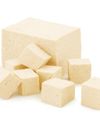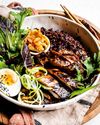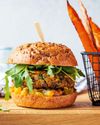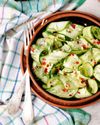
Kombucha is a fermented tea beverage which dates back thousands of years to ancient China. In Eastern cultures kombucha is traditionally known as the “Tea of Immortality” and is revered for its healing properties. In 414 CE a physician named Kombu introduced the fermented drink into Japan, where he used it to cure Emperor Inkyo’s digestive issues. Then in the early 20th-century kombucha was brought to Russia and Germany and then France, where it was brewed in millions of homes as a health and digestive aid. Kombucha’s popularity increased among health and wellness enthusiasts after a 1960s Swiss study compared kombucha’s probiotic health benefits to that of yoghurt. Today kombucha is sold around the globe in a variety of flavours as a popular mainstream beverage enjoyed for its unique taste and health benefits.
Kombucha is regarded as a functional beverage due to its many beneficial health properties. It is known for its ability to support gut health and digestion, improve immune function and boost vitality and overall wellbeing. Studies have suggested kombucha consumption may offer protection against a number of chronic diseases such as type-2 diabetes, cancer and joint disease.
How is kombucha made?
Kombucha is a healthy fermented beverage made from green or black tea (or both), together with yeast and sugar. This nutritious, tart and slightly sweet drink has an effervescent fizz, and can be made with a variety of fruit juices or herbs. The tea and sugar is fermented by a SCOBY (symbiotic culture of bacteria and yeast), which is a slimy, disc-shaped “tea fungus” needed for the production of kombucha.
Denne historien er fra Issue #29, 2020-utgaven av Eat Well.
Start din 7-dagers gratis prøveperiode på Magzter GOLD for å få tilgang til tusenvis av utvalgte premiumhistorier og 9000+ magasiner og aviser.
Allerede abonnent ? Logg på
Denne historien er fra Issue #29, 2020-utgaven av Eat Well.
Start din 7-dagers gratis prøveperiode på Magzter GOLD for å få tilgang til tusenvis av utvalgte premiumhistorier og 9000+ magasiner og aviser.
Allerede abonnent? Logg på

ARE YOU TO FU enough?
Love it or hate it, everyone has an opinion about tofu. Tofu is a very popular plant-based protein for vegans and vegetarians, but now this humble bean curd is starting to shine for meat lovers too as an alternative source of protein.

Sweet TRAYBAKES
Whether you want to feed a group of people or make a batch of treats for the week, traybaking is a no-fuss way to cook up something sweet and easy that will please everyone. Your family and friends will love you when you offer them some of our: cinnamon scrolls; fruity chocolate; espresso brownies; lemon & coconut slice; or ginger cake with brown butter frosting.

ROLL UP
When you roll food, whether in Lebanese bread, a thin pancake or whatever you choose, you can create a parcel of nutrition that is perfectly suited to your own tastes and needs. Here are some roll-up recipes that will suit every occasion including: mango, snow pea, & sprout rice paper rolls; oat crepes with coconut yoghurt & mixed berries; or beef meatball & tzatziki flatbreads.

RICE BOWL Lunches
If you are working from home, or even enjoying your weekend, and lunchtime rolls around but you have no plans for lunch, then a rice bowl is an ideal saviour.

PLANT-BASED PIES
Pies are a piece of gastronomic brilliance: a filling with a case and lid you can eat is food genius. The first pies date back to Egyptian times and there is a recipe for chicken pie that was carved into stone more than 4000 years ago. For millennia, however, the pie casing was mostly used to cook the filling, but for around 500 years or more we have been eating the pie crust too.

20 FOOD CRAVING HACKS
Decipher the deeper causes of your cravings and discover tricks to curtail them.

Eggplant (Solanum melongena L)
Eggplant is a wonderful option for vegans and vegetarians, extremely nutritious and highly versatile in the kitchen.

5 PANTRY SAVIOURS
Whether you're cooking a simple breakfast or something more exotic, here are five pantry food staples you should have on hand to cook plenty of delicious meals in the comfort of your own home.

Cucumber (Cucumis sativus)
Cucumbers are delicious fresh but they also offer plenty more options in the kitchen.

Our Chefs
Meet the chefs who bring this issue's recipes to you: Lisa Guy, Georgia Harding, Lee Holmes, Sammy Jones, Raquel Neofit, Naomi Sherman and Ames Starr.